What if there was a way to feel intoxicated and wide-awake at the same time? What if a drinker could party until dawn without feeling the fatigue brought on by alcohol consumption? Would this be enticing for young drinkers? Would this help perpetuate the belief that they are ten feet tall and bulletproof? That is the expectation many drinkers have from mixing alcohol with the 250 or more energy drink brands currently sold and consumed in the United States.
The potential danger associated with the consumption of energy drinks has been widely reported in the popular press and in scientific papers in recent years. The contention held by some scientists is that the ingredients in these drinks, including Turin and other stimulants, can be hazardous. These risks, as significant as they seem to be, may actually pale in comparison to the physical and emotional risks posed by mixing energy drinks with alcohol.
Mixing energy drinks with alcohol has become a popular and common occurrence. Young drinkers use energy drinks in anticipation of reducing the depressant effects of alcohol and allowing them to party longer (Marczinski & Fillmore, 2006). When mixed together, these beverages are commonly referred to as “Vodka Bulls,” “Red Bombs,” “Jager Bombs” (Jagermeister and Red Bull), and other similar names. The popular press reports that 90% ninety percent of young adult drinkers under age 25 consume energy drinks. More that 25% combine alcohol with energy drinks (FDA News Release, 2009) and approximately 78% had consumed energy drinks with alcohol in the past month (Thombs, O’Mara, Tsukamoto, Rossheim, Weiler, Merves, & Goldberger, 2009). Drinkers of alcohol mixed with energy drinks report that they feel more alert, more coordinated, and generally more sober than other drinkers do. However, nothing could be further from the truth.
Young drinkers use energy drinks in two different ways. Some drinkers pre-load with energy drinks alone consuming three, four, or even five energy drinks before their night of partying. Their intent in doing so is to stave off the fatigue and other depressive effects of the alcohol they will consume later. These drinkers believe they can party longer by amping up their system. Other drinkers use energy drinks as an alcohol mixer in the traditional sense hoping that the ingestion of caffeine and other stimulants along with alcohol will reduce or reverse the depressant effects of the alcohol as they drink.
Whether a drinker pre-loads for the evening by drinking a large number of energy drinks or consumes energy drinks through the night, Physicians have warned of the potential health complications of mixing caffeine with alcohol (American Medical Association, 2003). Energy drinks can contain 150% to 300% of the amount of caffeine content the FDA allows for cola beverages (McCusker, Goldberger, & Cone, 2006). University of Southern California School of Pharmacy’s Roger A. Clemnents explained to ABC News that cardiovascular risk, impaired judgment, shortness of breath, dizziness, disorientation, and rapid heart rate are major concerns of energy drink consumption at this level (Rodriguez, 2006).
Most consumers do not realize the level of stimulants found in energy drinks. For example, a 16-ounce serving of Rockstar contains 150 mg of caffeine, 16 ounces of Full Throttle contains 144 mg of caffeine, and a 16-ounce serving of Red Bull contains 160 mg of caffeine (Rodriguez, 2006). By comparison, a 12 oz can of Coke, a common alcohol mixer, contains 34 mg of caffeine. Others mixers such as Sprite have 0 mg of caffeine. The American Dietetic Association considers 200 – 300 mg of caffeine a day to be a moderate amount (Rodriguez, 2006). The FDA has only approved the use of caffeine in beverages that do not exceed 200 parts per million, a level much lower than that contained by energy drinks (FDA News Release, 2009).
Clinical studies have found that the consumption of caffeine, a central nervous system stimulant and major ingredient in energy drinks, and alcohol, a depressant, reduces one’s ability to accurately assess one’s own intoxication levels and reduces objective self-measures of impairment (Ferreira, de Mello, Pompeia, & de Souza-Formigoni, 2006). As a result, energy drink and alcohol consumers underestimate their intoxication level. This consistent underestimation may increase the potential for alcohol-related harm such as alcohol poising, intoxication, physical injury, impaired driving, and sexual victimization. One college study found that in comparison to students who consumed only alcohol, students who consumed energy drinks mixed with alcohol experienced a higher prevalence of alcohol-related consequences including being taken advantage of sexually, taking sexual advantage of another, riding with a driver who was under the influence of alcohol, being hurt or injured, and requiring medical treatment (O’Brien, McCoy, Rhodes, Wagonar, & Wolfson, 2008). Research conducted at Wake Forrest University Baptist Medical Center in North Carolina found that compared to those who did not mix alcohol with energy drinks, energy-drink/alcohol drinkers were twice as likely to take sexual advantage of someone and had double the risk of being taken advantage of sexually (O’Brien et al., 2008).
The tendency to drink more, drink longer, and have higher BAC levels associated with the consumption of energy drinks mixed with alcohol is even more alarming. A recent study conducted by researchers at the University of Florida found that patrons consuming alcohol mixed with energy drinks were three times more likely to have a BAC greater than 0.08% than other drinkers (Thombs et al., 2009). The study discovered that drinkers of energy drinks mixed with alcohol engaged in drinking for a longer period of time, they consumed more total drinks, and had higher levels of alcohol intoxication than other drinkers had. Clearly, the expectation to feel intoxicated and wide-awake at the same time and to be able to party until dawn without feeling the fatigue brought on by alcohol consumption is being realized by these drinkers through a combination of energy drinks mixed with alcohol.
Consumption of alcohol mixed with energy drinks has significant implications for impaired driving and impaired driving deaths. The University of Florida study found that bar patrons who reported consuming energy drinks mixed with alcohol were over four times more likely to report an intention to drive after drinking (Thombs et al., 2009). Consuming energy drinks mixed with alcohol may reduce perceptions of alcohol impairment, and thus, increase one’s confidence in operating a vehicle under the influence of alcohol (Thombs et al., 2009). The findings corroborate previous studies that suggest that combining the stimulant effect of energy drinks with alcohol may lead drinkers to underestimate their levels of intoxication and consume larger quantities of alcohol (Finnegan, 2003; Reissig, Strain, & Griffiths, 2009). Reports from Ireland and Germany have also implicated these beverages in assaults and automobile accidents further suggesting that the combination of stimulants and alcohol impairs the ability to correctly assess one’s level of intoxication, one’s ability to drive, and one’s ability to make rational and safe decisions more significantly than alcohol intoxication alone (Tormey & Bruzzi, 2001).
The implication of this is finding is staggering. The United States has an epidemic of impaired driving with at least 50% of impaired drivers and drivers involved in alcohol-related crashes coming directly from a bar or restaurant where they were over-served alcoholic beverages. Now, with the advent and popularity of alcoholic beverages mixed with energy drinks, even more impaired drivers may now be on the roadways. Additionally, drinkers who previously arranged for a designated driver may not do so now because they anticipate that they will be less intoxicated by consuming energy drinks.
Evidence is also beginning to emerge that drinkers who consume the energy drinks mixed with alcohol may not exhibit the same behaviors associated with intoxication as drinkers who consume alcoholic beverages other than mixed energy drinks. This presents a significant risk to public safety. Police officers may not be able to observe the same behavioral clues necessary to affect impaired driving arrests. Bartenders may not be able to determine when the drinker of energy drinks mixed with alcohol should not be served additional alcohol without the use of effective alcohol service monitoring practices such as drink counting and patron assessment techniques.
The United States is not the only county that has felt the impact of co-use of alcohol and energy drinks. France, Turkey, Denmark, Norway, Uruguay, and Iceland banned high-caffeine/taurine energy drinks altogether (Rodriguez, 2006). Sweden banned mixing energy drinks with alcohol (Rodriguez, 2006).
The United States must take steps to reduce the risks posed by combining alcoholic beverages with energy drinks. It is important for bartenders, parents, and young adult drinkers to understand the effects of alcohol mixed with energy drinks. Bartenders must be trained to understand both the change in decision making and differences in observable behaviors associated with drinkers consuming energy drinks and alcohol. Bartenders and servers must utilize drink counting based on a patron’s gender, weight, body type, amount of alcohol consumed and elapsed time to ensure that patrons are not over-served regardless of their apparent intoxication level brought on by the co-use of energy drinks and alcohol. Parents and friends must make the drinkers aware of the risks associated with mixing alcohol with energy drinks. Consumers of energy drinks and alcohol need to alter their drinking behaviors so not to put themselves or others they may harm at risk. Drinkers must understand their own tendency to underestimate their intoxication level, to overestimate their ability to safely operate a motor vehicle, to understand that their ability to make crucial and safe decisions about such things as sexual activity is impaired, and to understand that consuming energy drinks with alcohol leads to greater alcohol consumption and impairment, even though they may not feel as impaired.
Finally, State and Federal lawmakers should examine the risks associated with the consumption of energy drinks with alcohol and determine if legislative action is necessary to protect young drinkers and persons they may harm. Legislative review may support the need for citizen, consumer, and parent education; bartender and beverage licensee training; and consideration of limiting the use and/or sale of energy drinks, especially those mixed with alcohol.
References
American Medical Association. (2003). Proceedings from the Educational Forum on Adolescent
Health: Youth drinking patterns and alcohol advertising. Chicago.
FDA News Release. (2009). FDA to look into safety of caffeinated alcoholic beverages.
Retrieved February 9, 2010 from http ??.fda.gov/NewsEvents/ Newsroom/
PressAnnouncements/2009/ucm190427.htm.
Finnegan, M. (2003). Alcohol tolerance in humans is enhanced by prior caffeine
antagonism of alcohol-induced impairment. Experimental and Clinical
Psychopharmacology, 11, 598-605.
Marczinski, C., & Fillmore, M. (2006). Club goers and their trendy cocktails;
Implementations of mixing caffeine into alcohol on information processing and
subjective reports of intoxication. Experimental and Clinical
Psychopharmacology, 14, 450-458.
McCusker, R., Goldberger, B., & Cone, E. (2006). Caffeine content of energy drinks,
carbonated sodas, and other beverages. Journal of Analytical Toxicology, 30, 112-
114.
O’Brien, M., McCoy, T., Rhodes, S., Waganer, A., & Wolfson, M. (2008). Caffeinated
cocktails: Energy drink consumption, high-risk drinking, and alcohol-related
consequences among college students. Academic Emergency Medicine, 15, 453-
460.
Reissig, C., Strain, E., & Griffiths, R. (2009). Caffeinated energy drinks-A growing
problem. Drug and Alcohol Dependence, 99, 1373-1379.
Rodriguez, N. (2006). Red Bull not the best mixer. Retrieved February 12, 2010 from
http : // abcnews. Go. Com/print??id=2759942.
Thombs, D., O’Mara, R., Tsukamoto, M., Rossheim, M., Weiler, R., Merves, M., &
Goldberger, B. (2009). Event-level analysis of energy drink consumption and
alcohol intoxication in bar patrons. Addictive Behaviors.
Tormey, W., & Bruzzi, A. (2001). Acute psychosis due to the interaction of legal
compounds: Ephedra alkaloids in “Vigueur Fit” tablets, caffeine in “Red Bull,”
and alcohol. Medical Science Law, 41, 331-336.
About the author: Mark Willingham is a retired state law enforcement major and regulated the alcoholic beverage industry for thirty years. Maj. Willingham is an expert witness in alcohol related injury and death lawsuits and a consultant in the responsible retailing of alcoholic beverages. He can be reached at 904.707.4400, mwilling@earthlink.net, or www.alcoholsolutions.org.



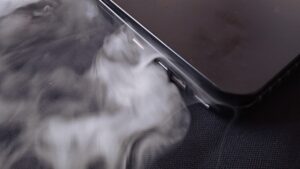
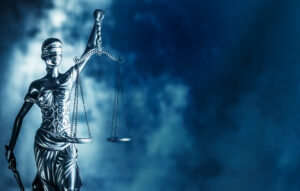
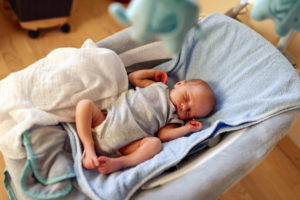
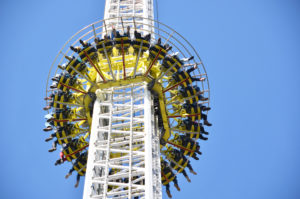


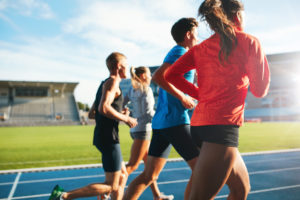

Comments for this article are closed.